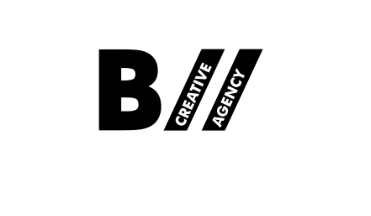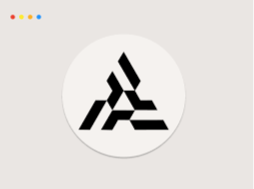So I was at this client meeting last Tuesday—small cafe in Bandra, overpriced cappuccino, the usual setup. The founder pulls out his laptop and shows me what his cousin’s friend designed for ₹3,000. I’m looking at this logo thinking, okay, how do I tell him this isn’t going to work without crushing his spirit?
Because here’s what happens all the time in India. Someone starts a business, they’re excited, bootstrapping, trying to save money wherever they can. Logo design feels like something you can cheap out on. Just get something “decent enough” and figure it out later, right?
Wrong. So, so wrong.
Why This Matters More Than You Think

That guy in Bandra? His target audience was premium fitness studios in Mumbai and Delhi. The logo his cousin’s friend made looked like it belonged to a local gym from 2008. Not bad, just… outdated. And in those premium spaces, outdated equals untrustworthy.
Indian logo design isn’t just about making something that looks nice. It’s about understanding layers. Like, actual layers of meaning that Indians pick up on without even thinking about it.
Last month I was in Jaipur for a wedding. Walking through the old city, I noticed something. Every successful shop—and I mean the ones with lines outside—had visual identities that just clicked with the neighborhood vibe. Not deliberately traditional. Not trying to be hip. Just… right. The colors made sense. The fonts felt appropriate. Everything communicated something before you even read the name.
Compare that to the new-age startups I see. Half of them have logos that could be from anywhere. Berlin, San Francisco, Tokyo—doesn’t matter. There’s zero connection to the fact that they’re Indian companies serving Indian customers. And they wonder why their branding doesn’t resonate.
The Mistakes Everyone Makes (Including Me)
I’ll admit something embarrassing. When I started freelancing in 2016, I thought I knew everything about creative logo ideas. I’d studied design, followed all the big international studios, and had my Behance portfolio looking sharp.
First major client? A mithai shop chain expanding across Gujarat. I gave them this super minimal, super clean logo. Black and white. Thin lines. Very “sophisticated.”
They hated it.
Not because it was a bad design. It was actually pretty good from a technical standpoint. But it was completely wrong for them. Their customers associated sweets with celebration, color, warmth, and family gatherings. My minimal black logo made their shops look like a doctor’s clinic.
That’s when I learned that good branding in India means understanding context before aesthetics. Who’s buying? Where are they buying? What are they buying? What emotions are tied to this purchase?
These aren’t abstract questions. Get them wrong and your business suffers, plain and simple.
What Actually Works (From What I’ve Seen)
The brands crushing it right now in India have figured out a specific formula. Not a design formula—a thinking formula.
They start with brutal honesty about who they are. Not who they want to be. Not who they think they should be. Who they actually are.
There’s this boutique hotel in Udaipur I stayed at last year. Small place, maybe 12 rooms, family-owned for decades. Their logo isn’t trying to compete with the Taj or Oberoi. It’s this beautiful, hand-drawn mark that references local miniature painting styles but doesn’t look old-fashioned. It promises exactly what they deliver—intimate, authentic, rooted in heritage but thoughtfully contemporary.
That’s the sweet spot for Indian logo design. Being confident yourself instead of a lesser version of someone else.
I’ve noticed Blanky creative agency design projects often hit this note. They don’t impose a style. They extract what’s already there in the brand’s DNA and make it visible. Sounds simple but it’s incredibly hard to do well.

The Money Conversation Nobody Wants to Have
Okay, real talk about pricing because this confuses everyone.
I’ve seen people spend ₹2,000 on Fiverr. I’ve seen rebrand projects cost ₹25 lakhs. Both can be justified depending on the business stage and needs.
But here’s what I tell everyone who asks: budget for what you actually need, not what sounds affordable.
Starting a neighborhood cafe? You probably don’t need a ₹5 lakh brand identity package. But you also can’t use a ₹2,000 generic template and expect it to build brand equity.
Launching a fintech product targeting tier-1 cities? That ₹2,000 logo will sink you before you start. You’re competing with brands that have professional design teams. Looking amateur isn’t “authentic,” it’s just amateur.
The calculation should be: what will this logo do for my business over the next 3-5 years? If it’ll be on everything—products, stores, digital presence, packaging, vehicles—it’s worth investing in getting it right.
My mithai shop client? After they got the right logo, they printed it on boxes, bags, store signage, and their delivery bikes. That logo probably appeared in front of thousands of people daily. The cost per impression was basically zero after a few months.
Industry-Specific Stuff That Matters
Different sectors in India have wildly different expectations around visual identity.
Tech/SaaS companies face this weird pressure to look “global” while staying relevant to Indian buyers. Too Western and you lose trust. Too Indian and you look unsophisticated to enterprise buyers. Threading that needle is genuinely difficult.
Fashion and lifestyle brands have more creative freedom but face incredibly high aesthetic expectations. Your logo can’t just be good—it needs to be statement-worthy. People will literally judge your products by how your branding looks.
Healthcare and wellness is tricky. The sector is changing fast in India. Traditional clinics wanted logos that looked established and serious. New-age wellness brands want something more approachable and modern. But both need to communicate trust above everything else.
Food and beverage might have the widest range. Street food brands can be playful and bold. Premium restaurants need sophistication. Regional specialties should honor authenticity. Cloud kitchens need instant recognition on app icons. All different challenges.
I spent two days last month with a coffee roastery founder in Coorg. Smart guy, great product, completely lost on branding. He kept showing me creative logo ideas from international coffee brands. I finally asked him: “Do you want to look like them, or do you want customers to remember you?” Different questions, different answers.
The Regional Factor Everyone Forgets
India isn’t one market. It’s dozens of markets with different visual preferences, languages, and cultural contexts.
A logo that crushes it in Delhi might need tweaking for Chennai. Not because South Indian customers are difficult—because the visual culture is different. The colors that feel festive change. The symbols that resonate change. The typography preferences change.
Smart brands design flexible identities that can adapt while maintaining core recognition. The primary logo stays consistent, but supporting elements might shift based on region or context.
I’ve seen this work beautifully with a jewelry brand that operates across multiple states. Their core mark stays the same, but the patterns and ornamental elements they use in marketing materials reference local art traditions. In Gujarat, they use Patola-inspired patterns. In Bengal, there are Kantha motifs. Customers feel seen without the brand fragmenting.
What’s Actually Changing Right Now
The conversation around branding in India has shifted massively in the past five years.
Five years ago, everyone wanted to look like they could be from anywhere. International. Generic. Safe.
Now? The brands getting attention and investment are the ones that confidently embrace their Indian identity. Not in a clichéd way—nobody’s putting elephants and lotus flowers everywhere. But in meaningful ways that connect with how Indians actually think and feel.
I’m seeing more regional language integration in logos. More playfulness with Indian typography. More bold color combinations that would make Western designers uncomfortable but work perfectly here.
There’s also this interesting thing happening with sustainability and social impact brands. They’re developing visual languages that communicate values without preaching. Subtle but effective.
Things I Wish More Founders Understood

Your logo is working even when you’re sleeping. It’s on your website header when someone’s browsing at 2 AM. It’s on your delivery packaging sitting in someone’s home. It’s on your social media posts getting shared or ignored based partly on how professional you look.
That’s a lot of pressure on a single design element. Which is why treating it as just another task to check off doesn’t work.
The founders who get this right treat logo development as a discovery process, not a transaction. They work with designers or agencies like Blanky creative agency who ask annoying questions about brand strategy before touching design software. They’re willing to push back on their own assumptions and sit with discomfort when the first concepts don’t match their preconceptions.
The founders who struggle? They’re usually the ones who know exactly what they want before talking to a designer. They’ve decided their logo should be blue because their favorite brand uses blue. Or it should be circular because circles are trendy. They’re optimizing for their personal preferences instead of what’ll work for their customers.
What You Should Actually Do
If you’re reading this and thinking about your own logo situation, here’s my advice:
Stop looking at what everyone else is doing. Seriously. Close the Pinterest boards. Stop stalking competitor websites. All that research is making you generic.
Instead, get specific about your actual business. Who are your real customers? Not your ideal fantasy customers—your actual ones. What do they care about? What makes them trust a brand? What makes them click away?
Then find someone who understands both design principles and Indian market realities. Someone who’s worked across sectors and cities. Someone who asks uncomfortable questions and pushes back on lazy thinking.
Budget realistically. If you’re serious about building a brand that lasts, invest accordingly. But also don’t get sold on unnecessary extras you don’t need yet.
And once you have something you believe in, commit to it. Give it time to build recognition. Don’t redesign every year because you get bored. Consistency compounds.
The Part Nobody Mentions
Here’s something that doesn’t get talked about enough: a great logo makes your entire life easier.
When your visual identity is strong and clear, every decision downstream becomes simpler. Website design? The logo sets the tone. Packaging? It provides the foundation. Marketing materials? They practically design themselves.
Weak logos create endless problems. Nothing quite looks right. You’re constantly making exceptions and special cases. Your brand feels scattered because it actually is scattered.
I see this play out constantly. The businesses with solid visual foundations scale smoothly. The ones with weak or confused identities struggle with every expansion, every new product, every marketing campaign.
Your logo isn’t everything. But it’s the foundation for everything visual in your business. Build it properly or spend years working around a weak foundation.
That’s the reality of logos in India. They don’t just identify your business—they shape how people experience it, remember it, and ultimately, whether they choose it.

